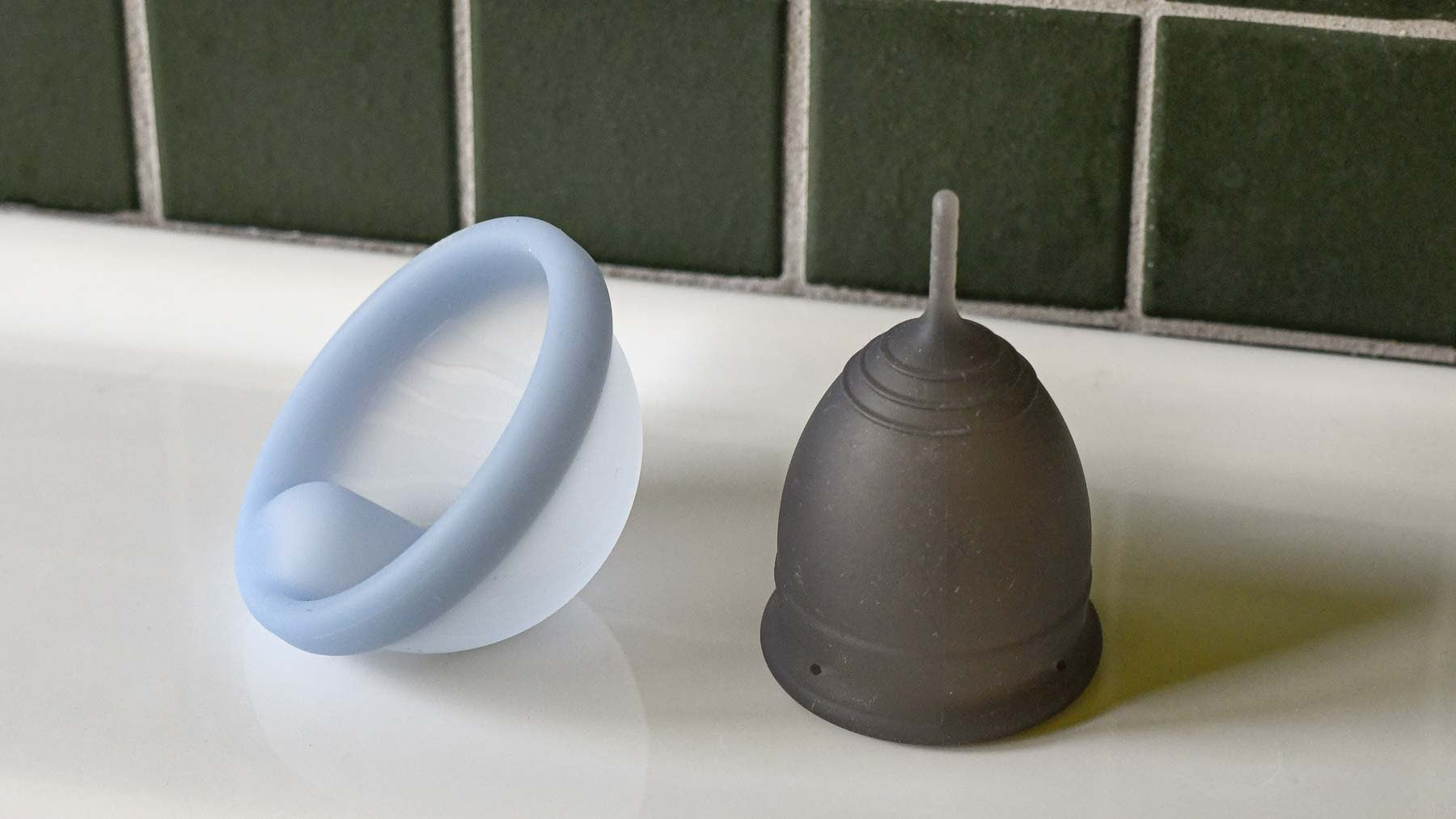
Menstrual Cups & Discs
HEADS UP: If frank discussions regarding the inner workings of roughly half of the human bodies on the planet aren't for you, you might want to skip this email. The information included here is comprised of firsthand knowledge from more than a decade of experiences as a user of menstrual cups (and later discs), as well as extensive reading on them from medical professionals, journals, and other users. However, nothing written below is intended to be medical advice. Talk to your doctor.

MENSTRUAL CUPS VS MENSTRUAL DISCS
And the question you're liking considering: Which product is right for me?
We get asked daily to describe the difference between menstrual cups and discs. For most people, that's because they want to know which product is "best" or which is right for them. Many people find, though, that it's more about WHEN they use which product than about picking one forever.
CUPS
Menstrual cups have been around a while (Hi, Diva!), so you're likely familiar with them, even if you haven't test driven one. And they've gotten better with time! Cups are a highly reliable, reusable period care product for most people. When inserted into the vaginal canal, they form a light suction against the walls that creates a leak-proof seal. The ones we carry are a very soft silicone, so the suction is likely less than other cups you've used. If you have experienced leaks with a menstrual cup, you likely should have emptied it sooner, or the cup wasn't fully unfolded after application. Giving it a twist from the base after insertion can usually solve that altogether.

Menstrual cups are not right for everyone, however. Folks who have a low cervix can find them uncomfortable (your doctor would have likely told you if this is the case for you), or just that they don't stay put due to a lack of space for them. The suction can also cause additional cramping, particularly if you already experience pain in the muscles around your pelvis. Additionally, if you have an IUD, it is not recommended to use any product that creates suction in the vaginal canal, as it risks dislodging the device.

DISCS
Menstrual discs account for many of the drawbacks of menstrual cups. Because they rely on gravity of the shelf created by the pubic bone to stay in place, there is no suction created, and they are therefore safe for IUD users. If you experience pelvic floor pain, the disc's lack of suction may make it a better option for you. Their shallow shape also allows most folks with a lower cervix to use them. They are also much wider and can accommodate more liquid before overflowing, so they can be better for those heavier days or folks with a heavier flow in general. Another benefit of the disc is that, because it sits closer to the cervix and is a thinner barrier, it can be worn for mess-free period sex!

That they don't seal tightly does mean that there is a greater chance of leakage with a disc, but it is usually only in small amounts if isn't very full. That can be accounted for with a liner or light period underwear. The disc can also take a little longer to get the hang of, since the user has to have a sense of where their pubic bone creates that shelf the disc relies on. However, both discs and cups can quickly become second nature with minimal practice—and asking questions you may have about the process early on.

BEST OF BOTH WORLDS
For folks who have both available to them, the cup and disc can offer distinct benefits depending on what that day has in store. For instance, I will be sure to wear a cup if I'm playing sports or swimming, or if there's a reason I can't wear backup protection. I also tend to pack the cup for travel, since it's more universal for me. I'll wear the disc if I'm cramping or if I know I won't get a chance to empty it during the day and need greater carrying capacity
For either product, the sizing is generally approached this way: most adult bodies will use a "regular" and most preteen/teen bodies will use a "small."
None of this advice is universal! There is some minor trial and error required for figuring out what works best for your body. That deters a lot of folks from taking this big step, but the vast majority of folks who have done so have never looked back!

Leave a comment